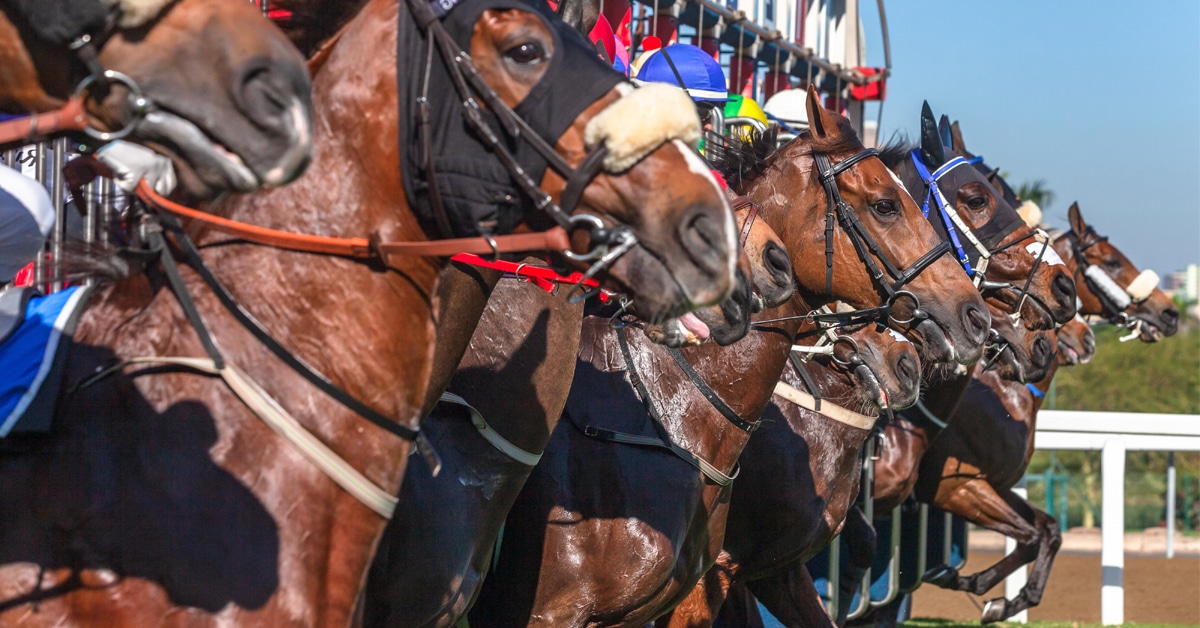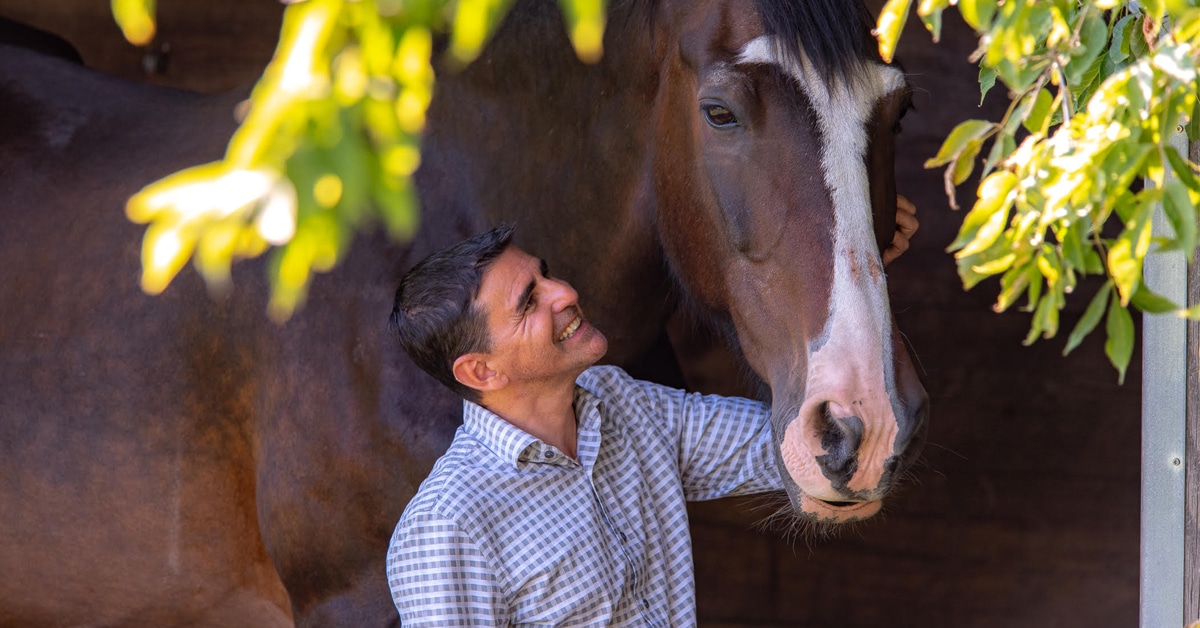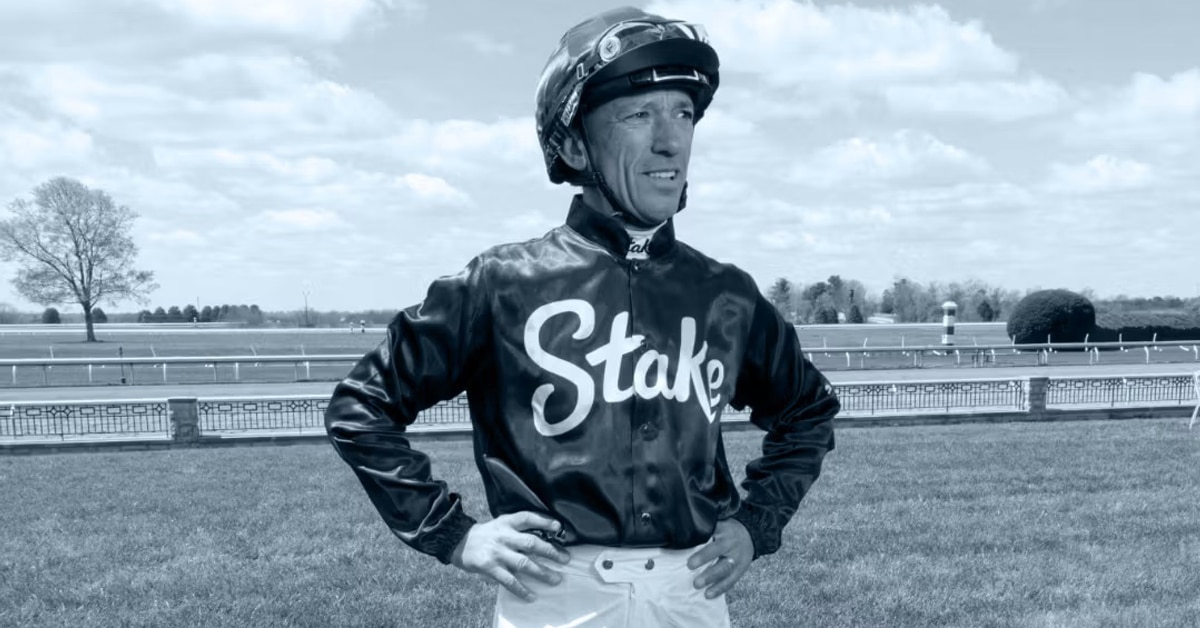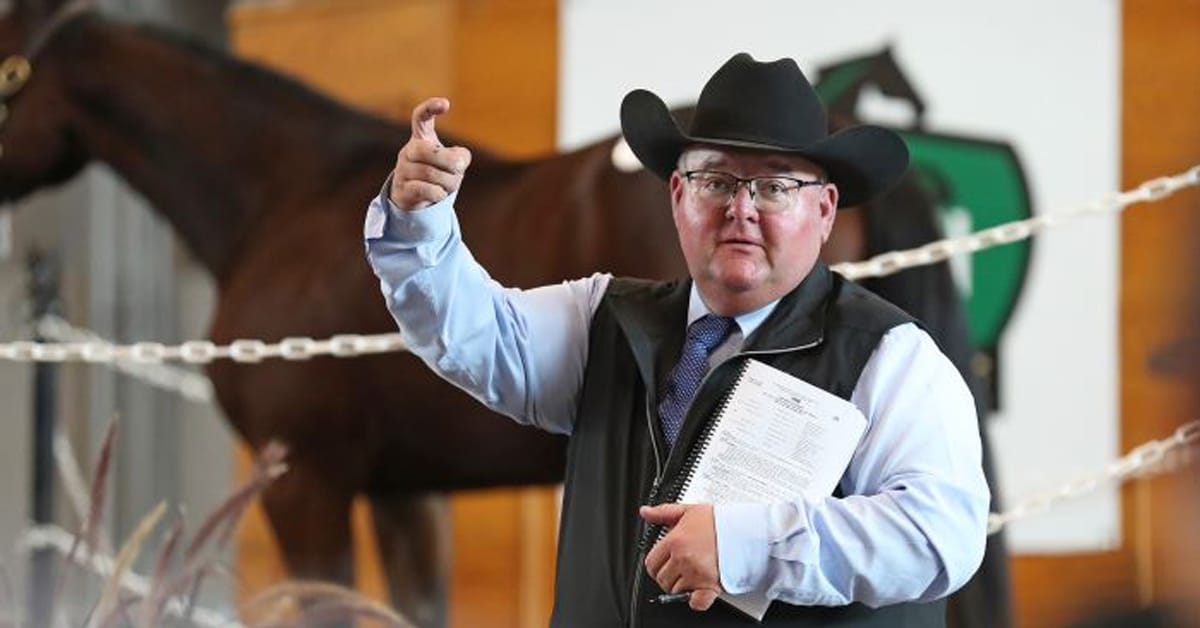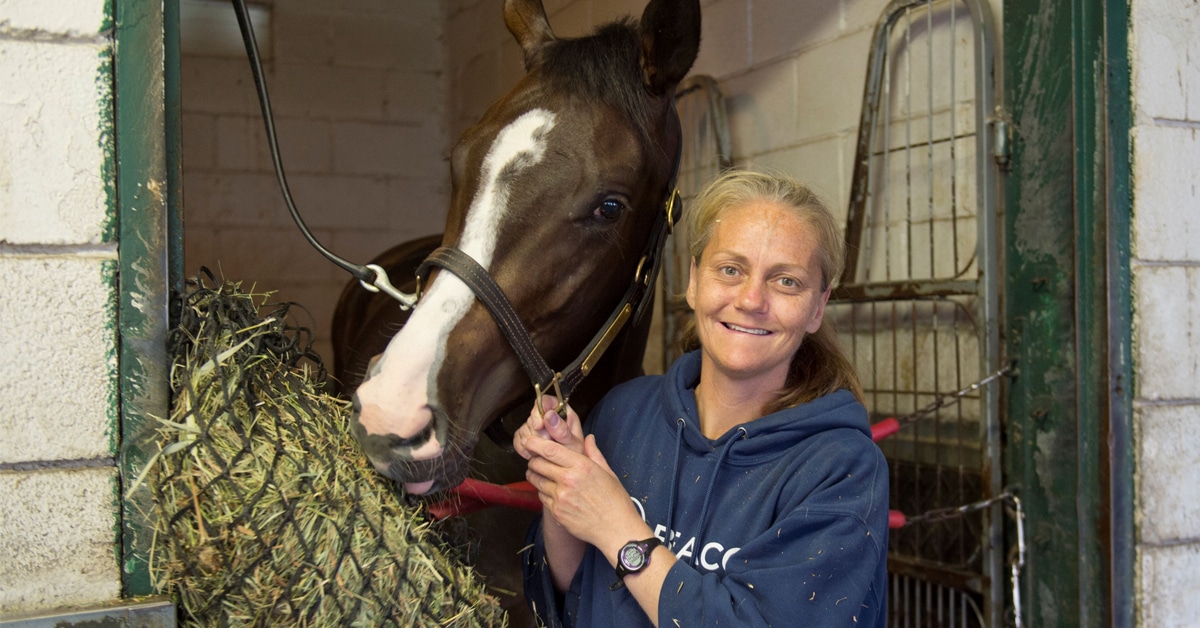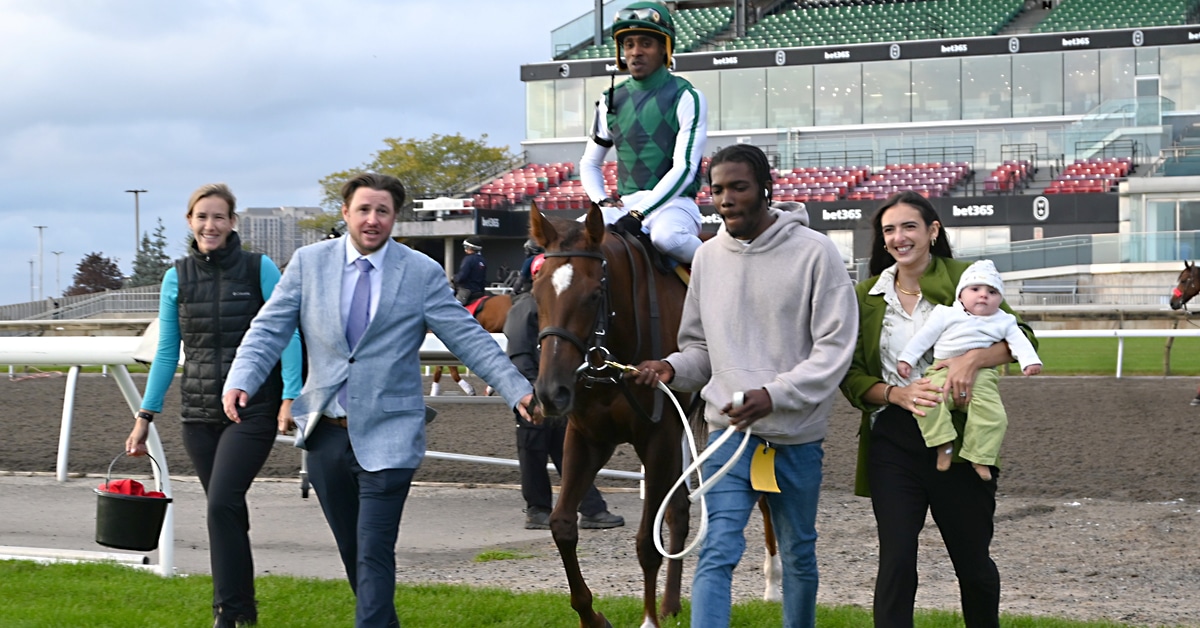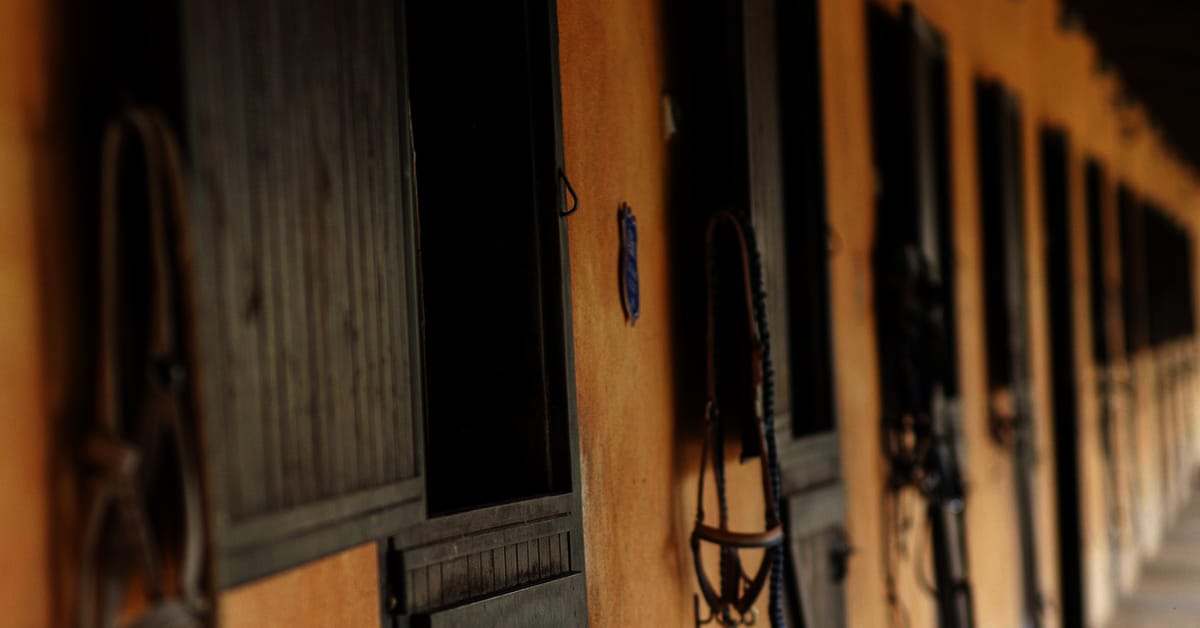Athletic ability in both humans and horses is largely genetic, so understanding the genetic make-up of a racehorse is a priceless skill. Before the recent advent of genetic testing in the laboratory, there were essentially three ways to estimate the genetic make-up of a thoroughbred racehorse: pedigree, conformation and racing performance. The latter two are visible to the naked eye, but estimating the strength of a pedigree has traditionally been more of an art than a science.
Top Racehorses Not Always Best
Having two parents who were outstanding racehorses has usually been considered the mark of a fine pedigree, but many top racehorses do not become successful breeding horses, while some rather modest racehorses go on to become excellent breeding horses. This is particularly true of broodmare prospects, since almost all stallion prospects enjoyed considerable success on the racetrack. The old adage of “Breed the best to the best, and hope for the best” is simply not an ideal breeding strategy.
On the other hand, it has been recognized by agricultural breeders across the livestock kingdom that certain bloodlines combine or “nick” consistently well, even when these bloodlines are relatively modest in their own right. To use a simple analogy, steak and caviar may not combine very well, but peanut-butter and jelly surely do. In the thoroughbred world, we saw that Northern Dancer thrived dramatically with mares loaded with Teddy blood, producing champions such as Nijinsky II, El Gran Senor, and Storm Bird, etc. Nijinsky II in turn produced an incredible 37 per cent stakes winners from mares by Round Table, yet only eight per cent stakes winners from mares by Buckpasser — the premiere broodmare-sire of his era. So a genetic compatibility between a sire and dam is a fundamental ingredient for success.
Pedigree matching in the computer age
In recent years, the computer age has seen a number of commercial breeding services that offer nick ratings based on the statistical success of a sire line with a particular broodmare-sire line. While these surely have some value, it must be kept in mind that an individual broodmare might not be typical of her bloodlines. Similarly, a young stallion prospect may not appreciate the same bloodlines that his sire line in general did. And there are certainly more than just the two bloodlines of the sire line and broodmare-sire line that create the overall genetic make-up of a foal. In fact, there are eight great-grandparents in just the third generation of a pedigree, and each contributes roughly as much genetic material as the sire line and broodmare-sire line.
Historically we have often found three particular bloodlines that combine well together, not just the two found in conventional nicks. At the dawn of the breed, the triumvirate of Herod, Matchem and Eclipse often found their way together in the pedigrees of the finest racehorses. When only two were present in a stallion or mare, the missing third ancestor was usually needed in their offspring. At the turn of the 20th Century, the trio of Domino, Ben Brush and Fair Play rose to dominance in North America, with a similar affinity.
Champions such as War Admiral and Stymie showed heavy doses of all three bloodlines. Soon afterward the European blood of Teddy combined extremely well with Man o’ War and Blue Larkspur (or his grandsire Black Toney), as seen in champions such as Buckpasser, Damascus, and Dr. Fager, etc.
More recently, the male lines of Northern Dancer, Seattle Slew, and Mr. Prospector have dominated the breed to a large degree. The bloodlines of Seattle Slew and Mr. Prospector have shown a particular affinity, producing the likes of Mineshaft, Pulpit, Bernardini, and Tomisue’s Delight among many others. And now we see Northern Dancer blood is thriving with these two bloodlines, very often through his grandson Storm Cat.
Current trends
In 2014 alone we have seen several dozen important stakes winners with Storm Cat, Seattle Slew, and Mr. Prospector all close-up in their pedigrees. (Plus promising young stallions such as Tiz Wonderful, Sky Mesa, Stormello, Bluegrass Cat, and Stay Thirsty.)
The recent revolution in genetic science has only supported the importance of pedigree, in particular a few key ancestors who appear to exert an unusually positive influence for several generations. Researchers have discovered a few key “speed genes” that may be crucial to success on the racetrack. Evidently racehorses without such genes have very little chance for success at the races, while those with a single dose have moderate prospects, and those with a double-dose (one from each parent) have stakes potential. Historically it seems likely that the most brilliant racehorses became a kind of “genetic royalty” who have passed on these speed genes to their descendants for generations. Mumtaz Mahal was reputed to be the fastest European filly for most of the 20th Century, and she later became the 2nd dam of the important stallions Nasrullah and Mahmoud, and the 3rd dam of Royal Charger, who sired the important sire Turn-to.
In 2014, Tapit (Pulpit) and War Front (Danzig) were the two highest-priced stallions in North America at $150,000. Tapit’s dam, Tap Your Heels, is out of the mare Ruby Slippers (Nijinsky II), while War Front’s dam is by Rubiano, himself out of Ruby Slippers. So the two most expensive studs in America both show Ruby Slippers close-up on their female side. Ruby Slippers, in turn, shows Foggy Note as her 2nd dam, and Foggy Note was the dam of Relaunch, the grandsire of Tiznow, who is now keeping the Man o’ War male line vital and flourishing into the 21st Century.
If large doses of such speed genes are an essential ingredient to success on the racetrack, then it would follow that inbreeding or linebreeding to such great ancestors would be a valuable breeding tool. The legendary Italian breeder Frederico Tesio evidently thought so, as his undefeated European champions Nearco and Ribot both show huge doses of linebreeding to the great St. Simon. Nearco shows St. Simon 5x4x4x5 in his pedigree, (indicating two strains of St. Simon in his 5th generation, and two more in his 4th, reading from the top down). Ribot had a similar pattern of linebreeding to St. Simon, but slightly further back in his pedigree. Likewise, Northern Dancer shows a huge dose of deep linebreeding to St. Simon on both sides of his pedigree, among the very highest doses of any stallion in recent decades.
The power of inbreeding and linebreeding
This raises another important principle of livestock breeding, namely that the best sires and dams will often show considerable inbreeding or linebreeding in their pedigrees, giving them a relatively uniform genetic make-up with which to stamp their offspring. Nearco, Ribot, and Northern Dancer were three of the most successful sires of the 20th Century, and surely their huge dose of St. Simon blood was instrumental.
Such deep linebreeding is also a very valuable tool in producing top racehorses, as seen in the pedigrees of Affirmed (5x5x6x7x6 — Teddy), Alydar (4x6x7x6 — Teddy), and A. P. Indy (5x5x4 — Nasrullah). Furthermore, A.P. Indy’s best sons Mineshaft, Pulpit, and Bernardini show even more Nasrullah blood through their dams, and all have become successful sires. While close inbreeding can increase the chances of inheriting genetic defects, such deeper linebreeding further back in the pedigree seems to lessen this danger while still concentrating the best genes.
The new field of “epigenetics” is now shedding important light on both human and equine behaviour. Recent studies show that key genes are not simply cranking out proteins mindlessly, but can be turned “on” or “off” depending on the needs of their environment. This “on” or “off” feature seems to explain the growing science of “gender imprinting”, which indicates that key genes may be turned on or off depending solely by the gender of the parent they were inherited from. This flies in the face of conventional genetic science, which assumed that a gene behaved the same regardless of the parent it came from, and this may well explain why some stallions see their sons excel at stud, while others see the daughters become far better breeding stock.
The case of Secretariat
The offspring of Secretariat are a prime example. His sons enjoyed almost no success at stud, while his daughters made him one of the best broodmare-sires of recent decades. Evidently some key genes were turned “off” in the offspring of his sons, while being turned “on” in the offspring of his daughters. In 2014, Storm Cat, A. P. Indy, and Gone West ranked as the top three broodmare-sires in North America, and remarkably all three are out of Secretariat mares! So the position of Secretariat in the pedigree is crucial.
Likewise, the great Buckpasser was often found as the broodmare-sire of top stallions such as Seeking the Gold, Miswaki, Woodman, and Touch Gold, while his male line waned dramatically.
Conversely, the most important foundation sires throughout thoroughbred history have seem much less success as broodmare-sires. Taking this one step further, the greatest foundation sires such as Eclipse, Phalaris, Nasrullah, and now Northern Dancer have virtually never seen their daughters produce a single important sire, while their sons produced a bounty of top sires. Again, the position in the pedigree is crucial.
Quieting the skeptics
While the breeding principles of nicking and linebreeding saw milk and egg production increase nearly fivefold during the 20th Century, skeptics sometimes question why these same principles do not consistently produce stakes winners among thoroughbreds. Keep in mind that the thoroughbred population in general produces about three per cent stakes winners from foals, so a breeding program that produces 15 per cent stakes winners is producing five times more than average for the breed.
Furthermore, a foal inherits 50 per cent of its genes from each parent, but we can’t predict which 50 per cent this will be.
So two full-siblings, whether horse or human, could by chance inherit almost an entirely different half of their parents’ genes and show very little similarity in size or ability. On the other hand they could just as easily inherit largely the same half of their parents’ genes. But on average they will inherit 50 per cent of the same genes, and thus a fairly similar athletic ability. This still leaves a good deal to chance, but with some intelligent planning small and large breeders alike can significantly improve their chances for success.
The Latest
